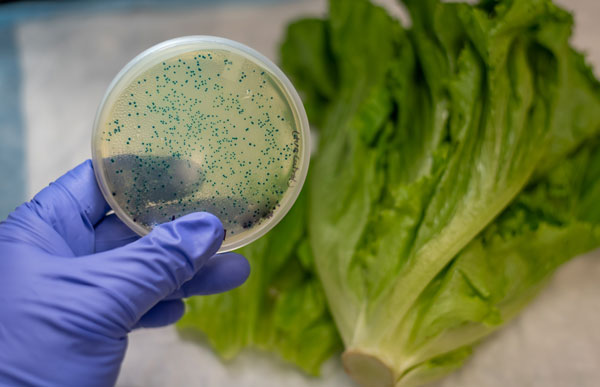Remembering the Importance of Food Safety During Food Safety Education Month
In the foodservice industry, every plate that leaves your kitchen carries not just flavors and aromas, but also the responsibility of providing safe and wholesome meals to customers. Celebrated each September, National Food Safety Education Month provides a platform for foodservice professionals to reaffirm their commitment to food safety. It’s a reminder that excellence in foodservice operations must always be accompanied by excellence in food safety; a reminder that any great meal begins with safe food as the foundation.
With everything you face as a foodservice operator, why should National Food Safety Education Month be so important for your business? If you’ve read these blogs at all, you have likely read about the importance we place on building a culture of food safety. September can be the month that you refocus your values. Your food safe culture begins with you as a manager, how you interact with your employees and where you place emphasis in your daily operations. A food safety culture values food safety – remember that your priorities can change daily, but your values stay the same. Use September to reaffirm your values with your employees and your customers.
Food safety is not just a regulatory requirement; it helps to establish and build trust with your customers. When patrons dine out, they trust that their meal will be safe to eat. By actively participating in National Food Safety Education Month, foodservice establishments reinforce their commitment to maintaining this trust with their guests.
Food safety may play a behind-the-scenes role, but its importance cannot be overstated.
For most operators, this is a great time to revisit some of our food safety practices that may have weakened during the peak summer months. What better time to do this than during this lull between summer and the holiday season? What are some ways in which you can participate in food safety month? Here are a few ideas to consider.
- Reinforce the importance of food safety training with your employees. Knowledge is the first line of defense against foodborne illnesses. Comprehensive food safety training for your staff should be a goal that all operators strive to achieve.
- If you have a HACCP program, or components of a HACCP program, conduct a thorough audit of the plan or program you have in place. Is it working? What could be improved? Engage employees in the process early on – they are truly the ones who know how it can be improved.
- Revisit your Master Cleaning Schedule, has it been kept up-to-date? Ensure that all equipment and utensils are properly cleaned and sanitized after use and are maintained appropriately. Not only will this help protect the food supply, but it will also help in extending the useful life of your equipment.
- Take a few minutes and double check your food safety supplies. Make sure your employees have the correct amounts and sizes of gloves, handwashing supplies, and cleaning chemicals to use on the job. Also be sure to inventory thermometers, and while you’re at it, make sure they are properly calibrated.
Food safety may play a behind-the-scenes role, but its importance cannot be overstated. As we honor National Food Safety Education Month, let us celebrate the dedication and commitment of foodservice professionals who work tirelessly to ensure that dining experiences are not only memorable but also free from foodborne risks. Risk nothing,
READ MORE POSTS
Don’t Turn a Blind Eye to Your Food Defense Practices
Late last week, as I mindlessly scrolled through Twitter, I ran across a Tweet suggesting the #IceCreamChallenge from summer 2019 was the real cause of the Coronavirus spread. Of course, the Tweet was made tongue in cheek, but it did cause me to reflect on that challenge, which had a short life on social media in the summer of 2019.
Salmonella and Listeria monocytogenes: Serious Threats to the Safety of Food
Earlier in the month, I mentioned the top microbial enemies we all face in foodservice operations, E. coli, Campylobacter, Salmonella, and Listeria monocytogenes. While we discussed E. coli and Campylobacter, we did not get around to discussing Salmonella or Listeria monocytogenes.
E. coli, Campylobacter, Salmonella, and Listeria monocytogenes…oh my!
Last month, I blogged a bit about the human factor in food safety. In the foodservice management realm, I do think the human factor is our biggest challenge, day in, day out. While the human factor is a major contributor to most foodborne illness outbreaks, we can’t forget about the microbial enemy we face on a daily basis.
The Human Factor and Food Safety
A few weeks ago, we discussed the top five causes of foodborne illness, 1) Improper hot/cold holding temperatures of time and temperature control for safety foods; 2) Improper cooking temperatures of food; 3) Dirty and/or contaminated utensils and equipment; 4) Poor employee health and hygiene; and 5) Food from unsafe sources. As I noted, all of these items are not in the direct control of your staff, but most can be. For the second blog this month, I wanted to discuss a bit more about the human factor in our food safety programs.










